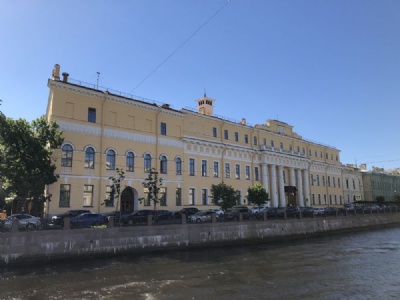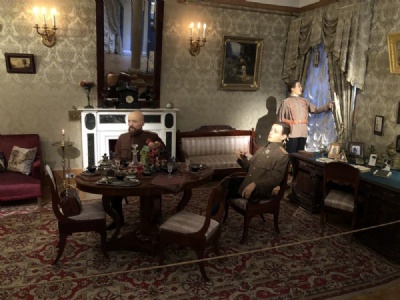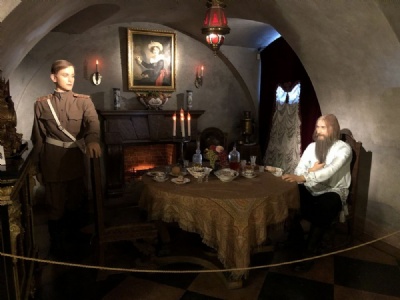Yusupov Palace
Along the Moika river in St. Petersburg lies Yusupov Palace, a Palace that has belonged to the wealthy Yusupov family since 1830. The Palace is also known for being the site where the Siberian mystic, monk and self-proclaimed healer Grigori Rasputin was murdered on December 30, 1916. Rasputin had managed to infiltrate the innermost circle of the tsarist family and thus gained power and influence that was strongly disliked by monarchists, including Prince Felix Yusupov, heir to the Yusupov family estates.
Together with other conspirators, Felix managed to lure Rasputin to the palace where he at a meeting with Felix in the basement was offered tea and cakes pre-laced with poison. But seemingly unaffected by the poison, Rasputin asked to be served wine. Felix then picked up wine that was also laced with poison and Rasputin drank a few glasses, still seemingly unaffected by the poison. Felix then picked up a revolver from one of the other conspirators waiting in another room. He went back to Rasputin and shot him in the chest. But Rasputin simply refused to die and managed to escape into the garden where he was finally shot death. Rasputin’s body was then dumped into the river Malaya Nevka but was found two days later. Rasputin was buried on January 2 with only the tsar family present.
Current status: Preserved with museum (2021).
Location: 59°55'46.2" N, 30°17'55.32" E
Get there: Metro to Spasskaya station.
Follow up in books: Montefiore, Simon Sebag: The Romanovs: 1613-1918 (2017).



The murder of Rasputin has its own exhibition at the museum and the rooms in question have been recreated. To give the exhibition more life, they have created wax figures of Rasputin and the conspirators and placed them in their respective historical places. Rasputin has actually become as famous as both the tsarist family and Lenin. There are various myths about him that he would have been murdered at the initiative of the British security services. Rasputin, with his influence on the family, would influenced political development in a certain way suited for British interests. Rasputin’s sexual excesses and his possible physical resources in the area is another persisted myth.